TANIGUCHI Akihiko
Media artist TANIGUCHI Akihiko created an educational manga work, titled The Manga: CAPTAIN TANIGUCHI’s Art Club 3D — new media art, in 2015 to provide hints for appreciating new media art in an easy-to-understand way through a story of two members of a high school art club who are learning about new media art. The work was exhibited at an exhibition held at NTT InterCommunication Center [ICC], titled ICC Kids Program 2015— Mechanisms Unraveled: How Ideas Are Cast Into Shape, together with an interactive miniature museum. This series is a sequel to the CAPTAIN TANIGUCHI’s Art Club 3D. It will make learning about contemporary media art more fun.
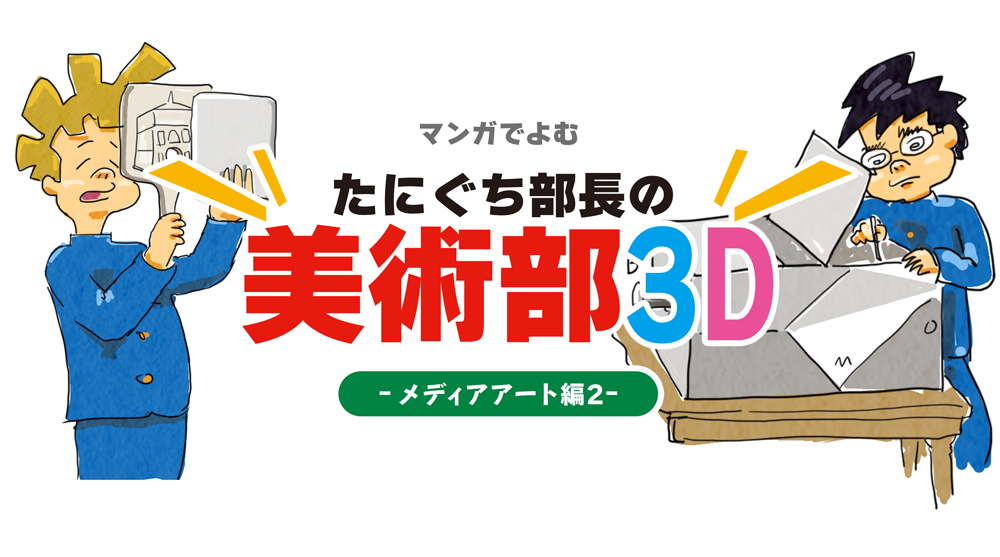
The story is set in a high school in Saitama, which has an after-school art club with only two members. TANIGUCHI, the club captain, suddenly starts studying art in preparation for entering an art college. HIROSHI, the other club member, watches TANIGUCHI lukewarmly. They are studying “new media art” once again, as they did in the 2015 work.
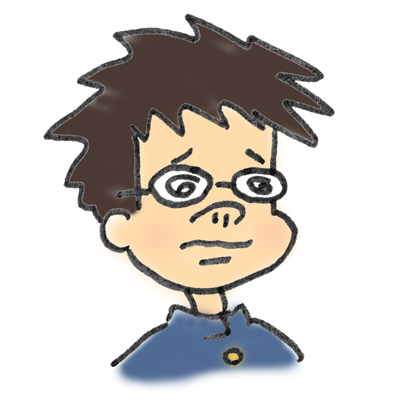
CAPTAIN TANIGUCHI
He is in his third year of high school. He had no interest in art, but suddenly starts preparing to go to art college. He is very logical.
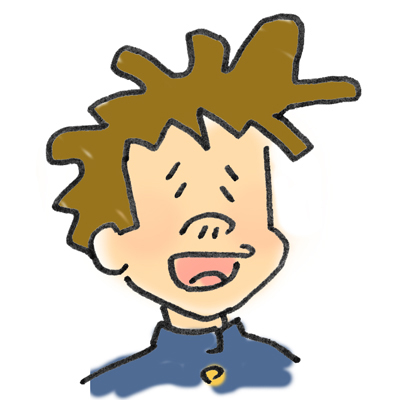
HIROSHI
He is in his second year of high school. He is not very interested in art, but sometimes speaks from a sharper point of view than CAPTAIN TANIGUCHI.
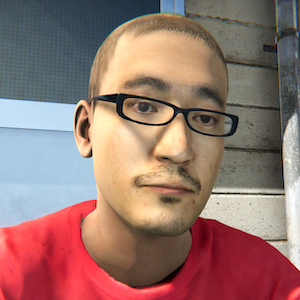
TEACHER supervising the club
He is forever 39 years old. He looks like a certain media artist.

DOG
A dog. It appears when it’s very difficult to fill a panel when drawing manga.
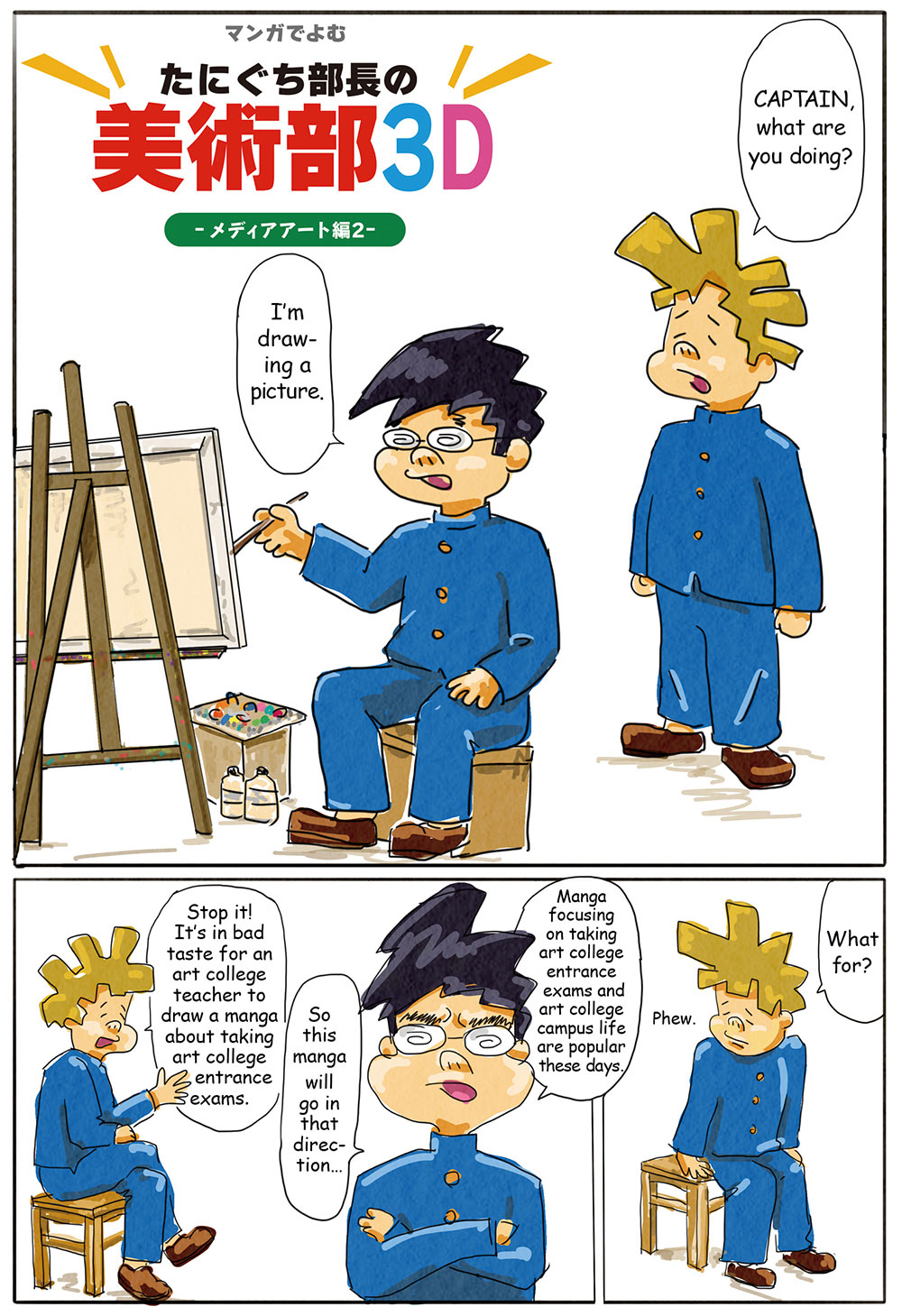
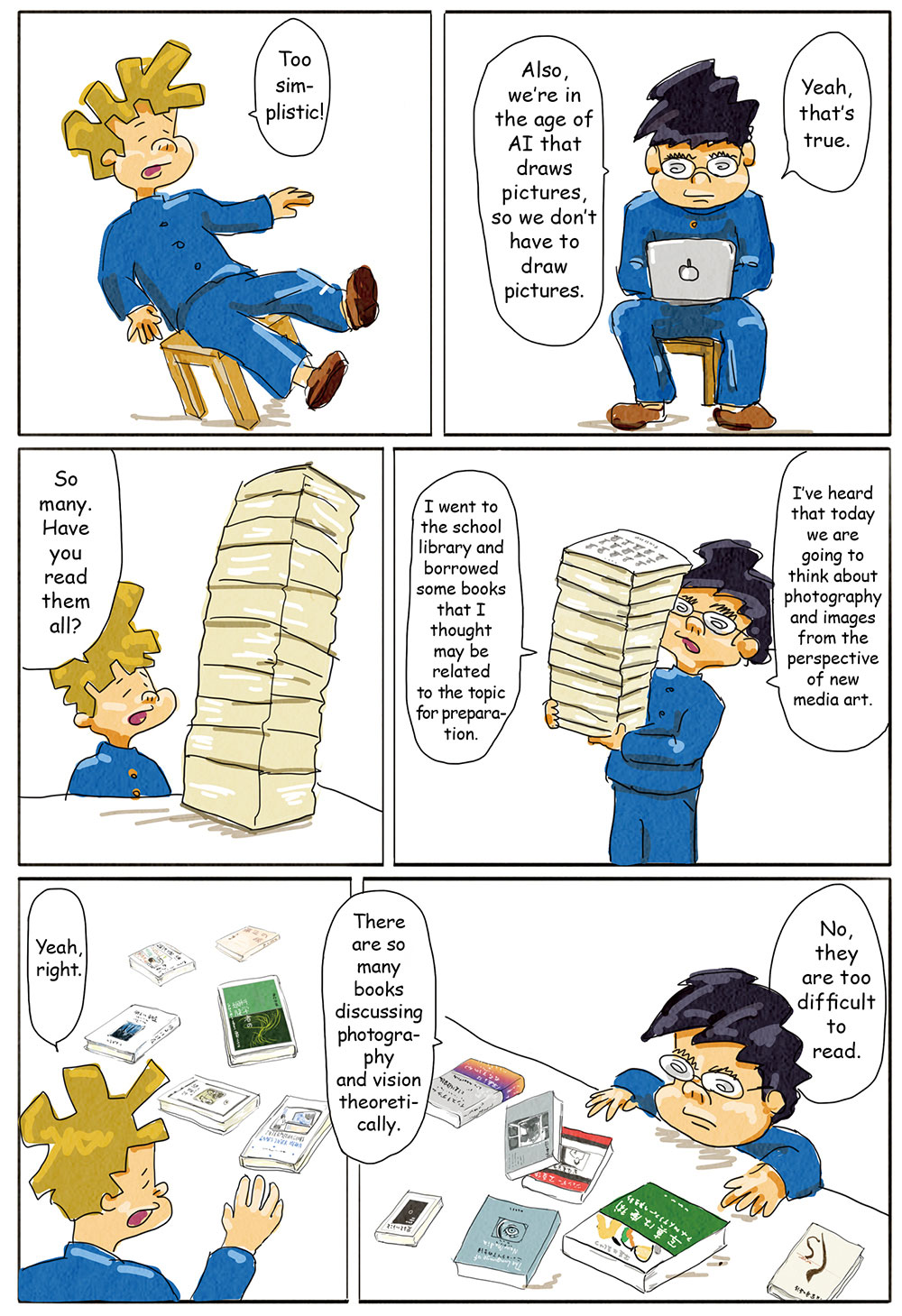
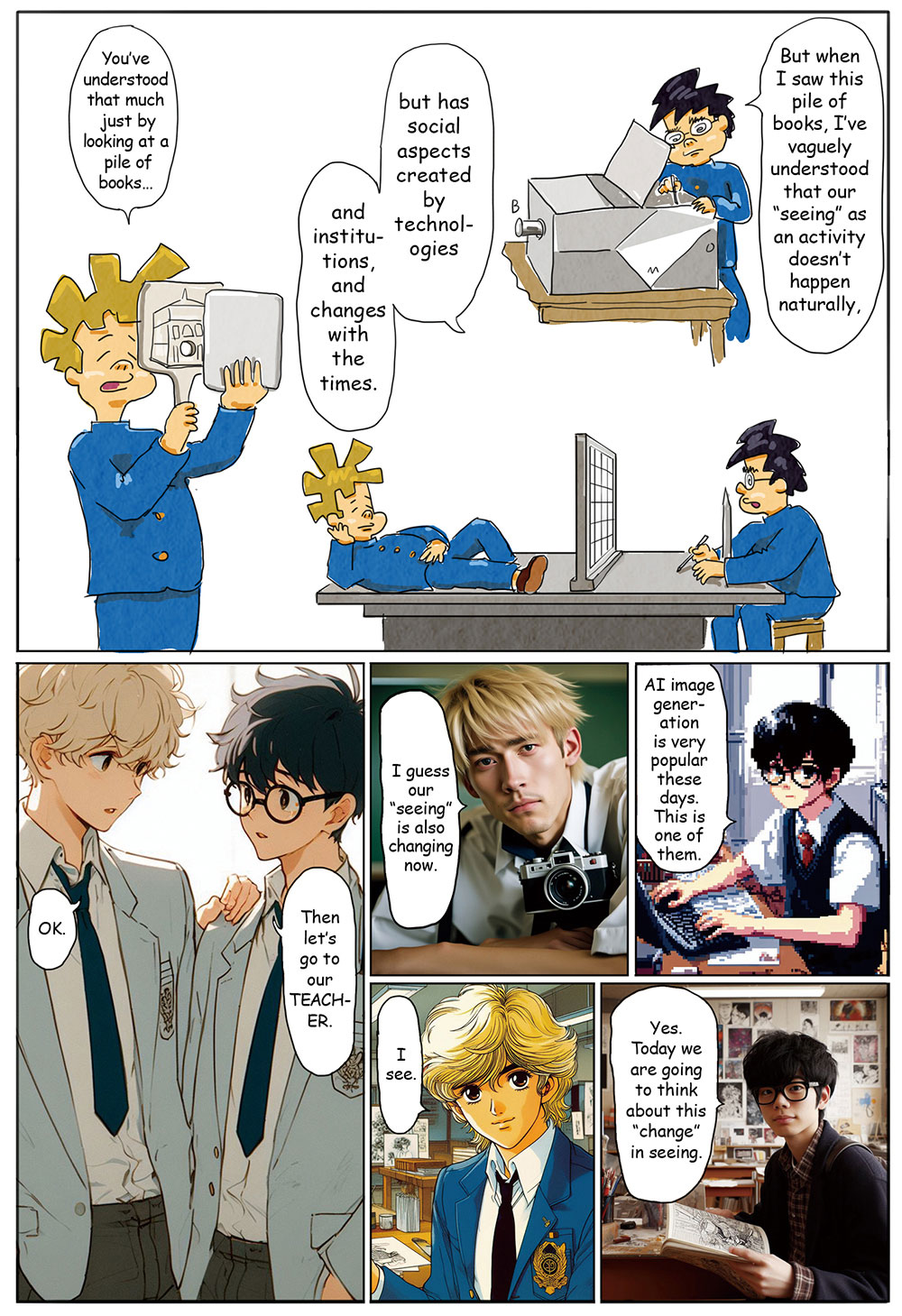

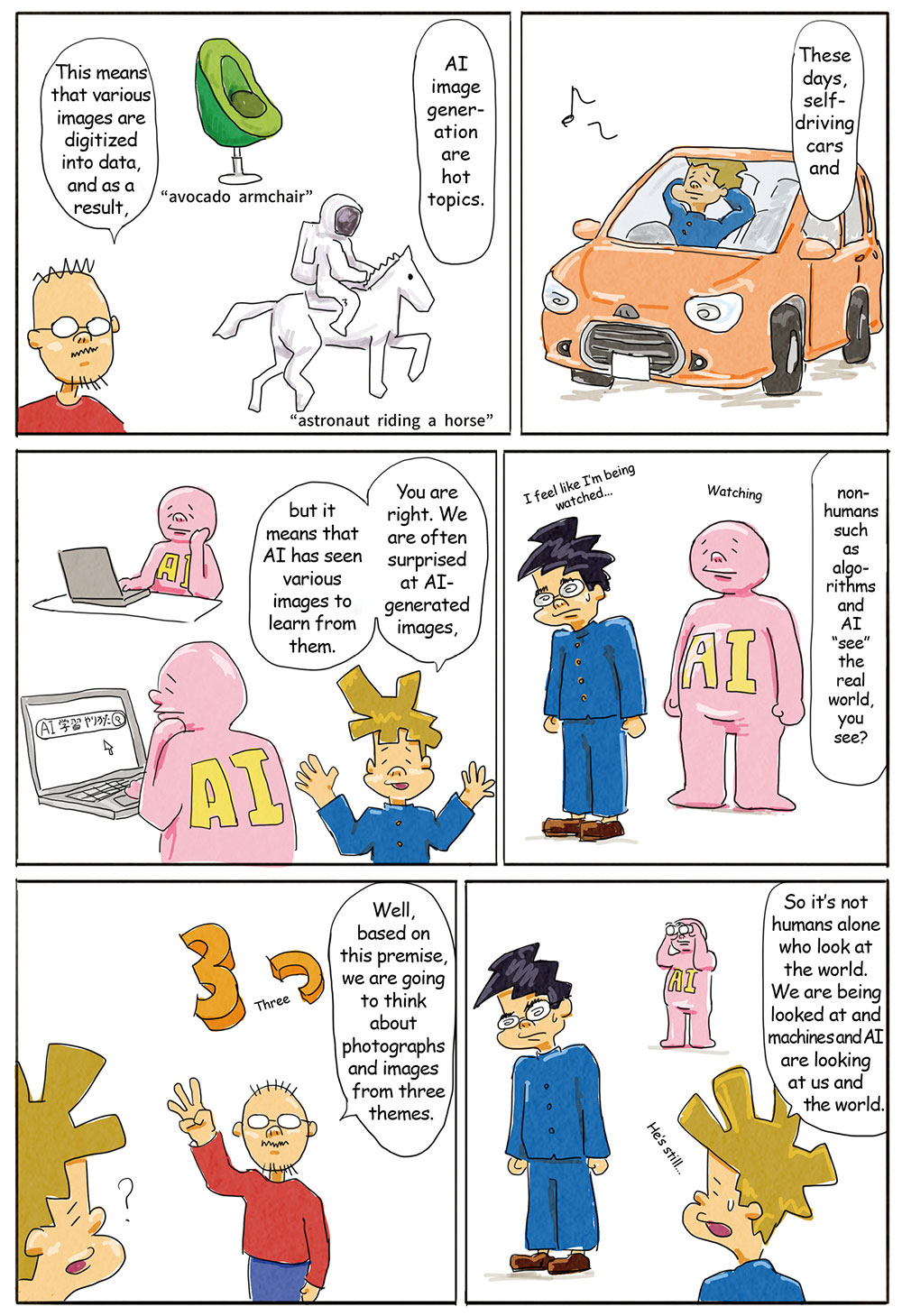
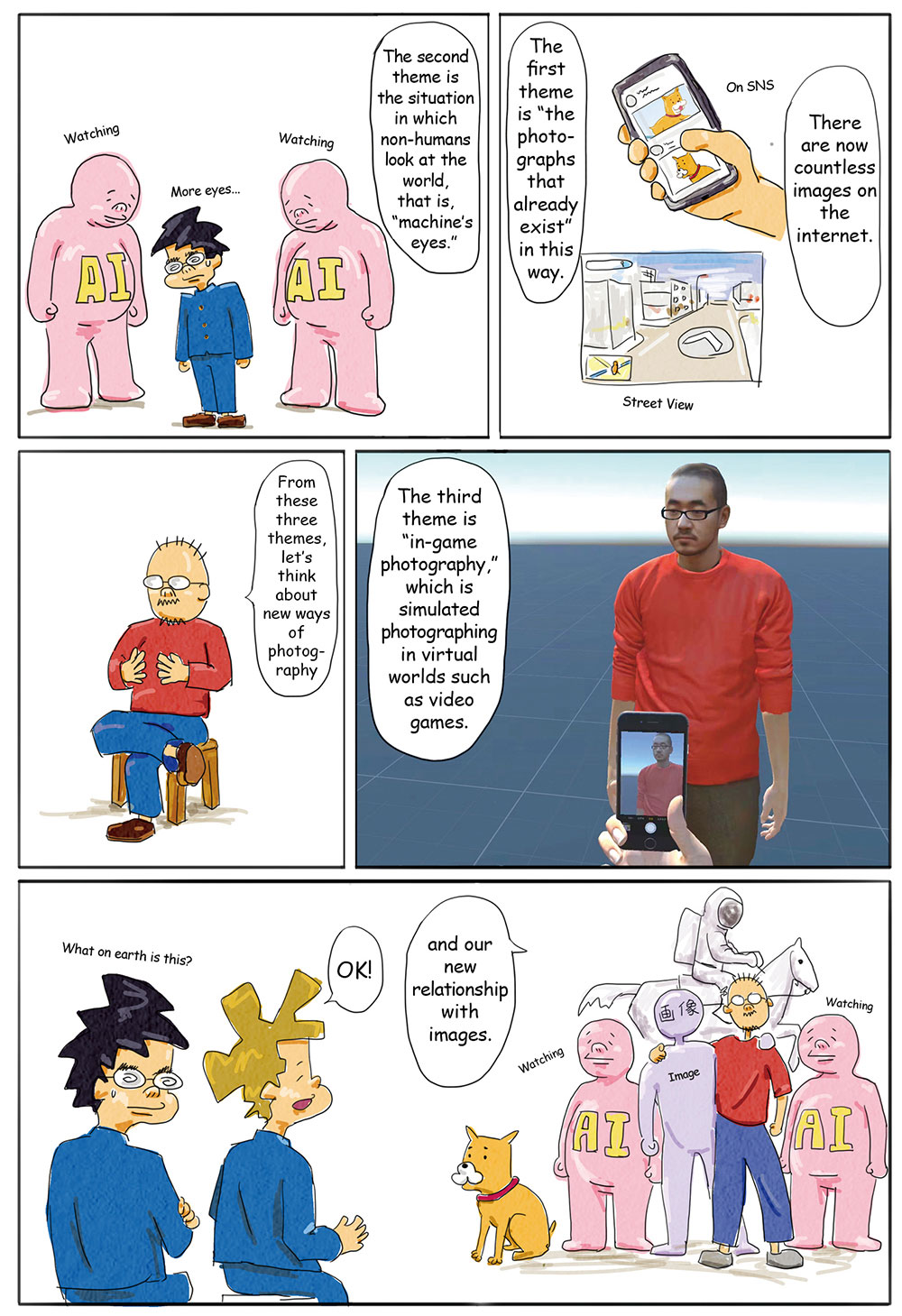

I’ll start with something a bit retro. There is, for example, a web service called Google Street View. I’m sure everyone has used it. It provides a huge number of 360-degree panoramic images of cities around the world.
I think you’ve all used it in various situations, for example, when traveling or checking out a shop you are visiting for the first time. It’s a kind of location hunting (visiting and checking out filming locations in advance, for example). But before the advent of Google Street View, people actually went to the location and took photographs there. In other words, I could say that with the advent of Google Street View, such location-hunting photographing became no longer necessary.

Ah, yes, that’s right. You mean their photographs have already been taken by Google.

With the advent of Google Street View, it feels as if the internet, which had been an alternative world, separate from reality, has incorporated reality into it and the internet itself has become part of reality. Google Street View cars are continuing to photograph the world and uploading a huge number of photographed images to the internet: it feels as if digitizing the whole world into data and storing the data. When I press the “Show Your Location” button, Google Maps shows me where I am now, but I still feel it strange that the internet tells me my current location.
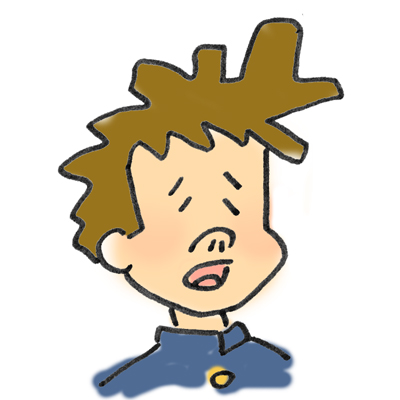
It’s as if separate things in origin are synchronized with each other and artificially create a reality.

If that’s the case, I really feel we may not need to take photographs on our own anymore.

Of course, Google Street View doesn’t photograph everything in the world, so it doesn’t mean that we really don’t need to take photographs, but I think it’s important for us to have a feeling that “Maybe it’s already been photographed (by a machine).”
In the past, back in 2009, when I just bought my first iPhone, I created a media artwork, which is an application called lens-less camera. It was right after the first iPhone was released. I made it assuming that the iPhone I was going to buy would not have a camera. The application uses the iPhone’s GPS to access Google Street View from the coordinates of my current location, obtain images taken there, and then post them on Twitter. At the time, it was popular on Twitter to tweet “[I’m in] XXX now” with the name of the place where you were visiting. For example, if you are in Akihabara, you can start this application, get an image of the place from Google Street View, and tweet “Akihabara now” with the image on Twitter. This way, you can get a photograph without a camera. But I was thinking that the image is of the past, not of “now” (the present).
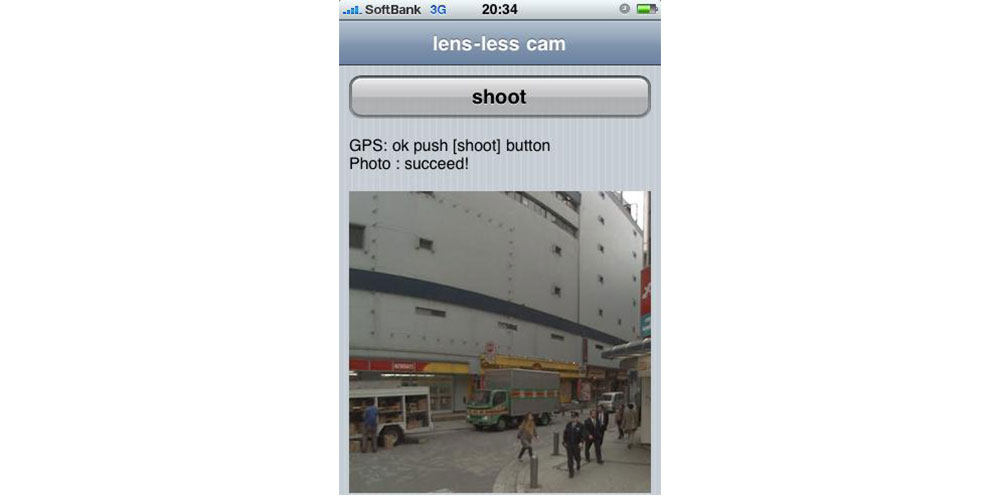
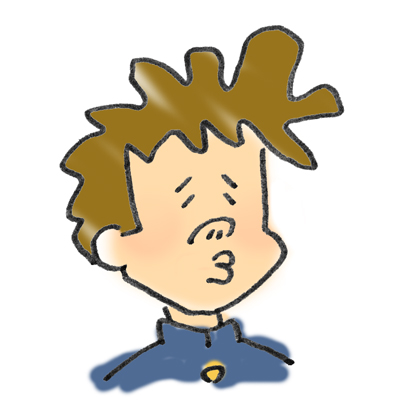
Heh.

Around the time, my friend and artist WATANABE Tomoya also created an application called somehow camera. When you take photographs with this application, it looks for similar-looking photographs using an image search function, and saves them on your iPhone. I think these applications shared the feeling that the photograph I have taken or I am about to take may have already been taken by someone else.
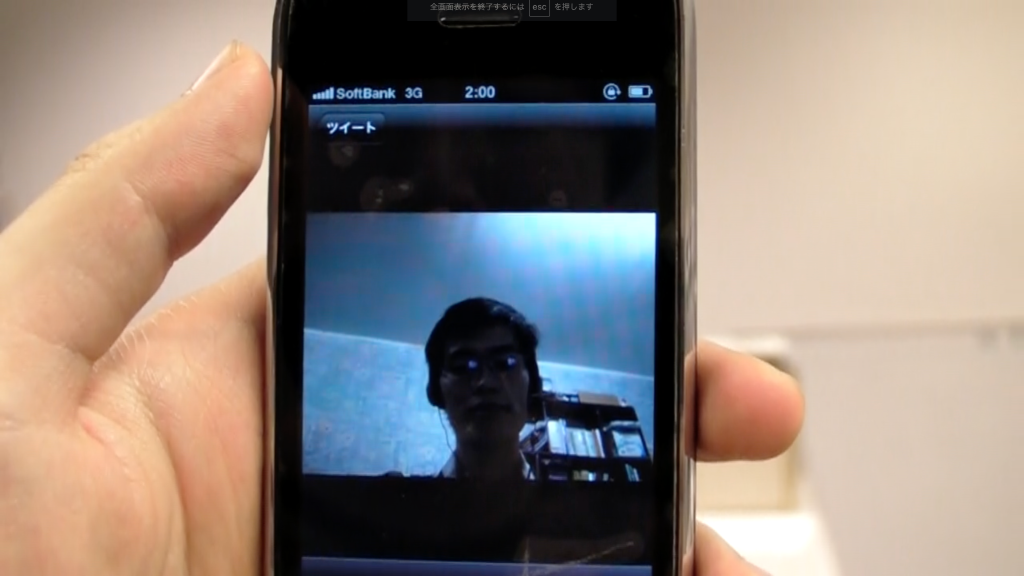
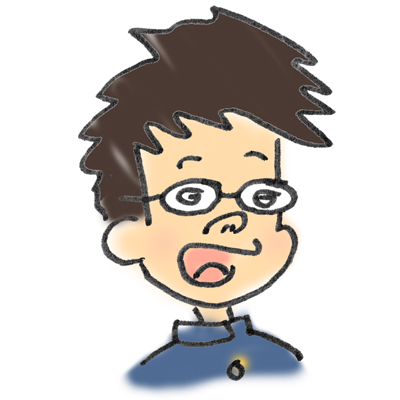
Wow, there was that kind of feeling back then. I suppose it is somehow similar to the recent AI image generation.

You must not take them as exactly the same, but I think they had similar aspects. Now, I will present you Search by Image (2011–) by Sebastian SCHMIEG, which is based on this feeling of “photographs that already exist.” This work was made by using an image-search program that searches for pitch-black images one after another, each of which looks similar to the previous one, but gradually changes to a different one. It’s kind of like what happens in the Telephone game. These images, about 3,000 of them, were then compiled as a video.
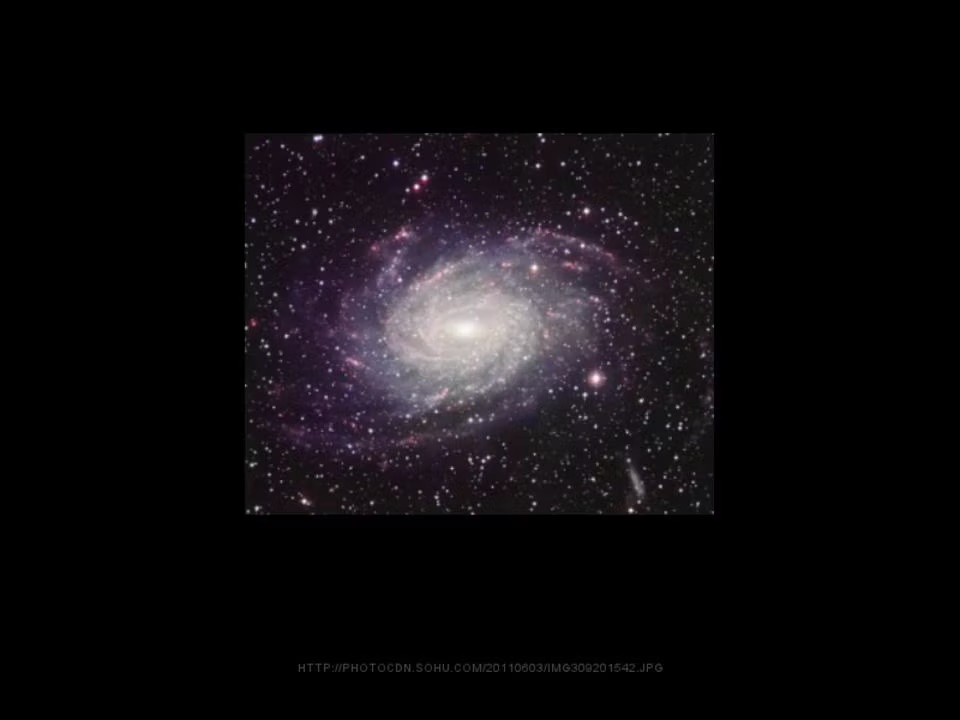

Wow, it’s amazing. The work seems to start with the universe generated from a pitch-black place, and from there familiar images popping up. It’s very interesting.

I felt that the same images appear over and over again while they are gradually altered, and they are wandering around the internet, while they are duplicated and redistributed.

When I see works like this, I really feel that we may no longer be able to create new, original images. But there is one work that takes advantage of this. It’s called Adding to the Internet (2009–2011) by Justin KEMP. You look for phrases that don’t show up in any Google image search results, such as “Hot dog under a pillow,” for example. Then you actually produce it, photograph it, and upload it to the internet. This photograph will be the first Hot dog under a pillow ever produced in the world.
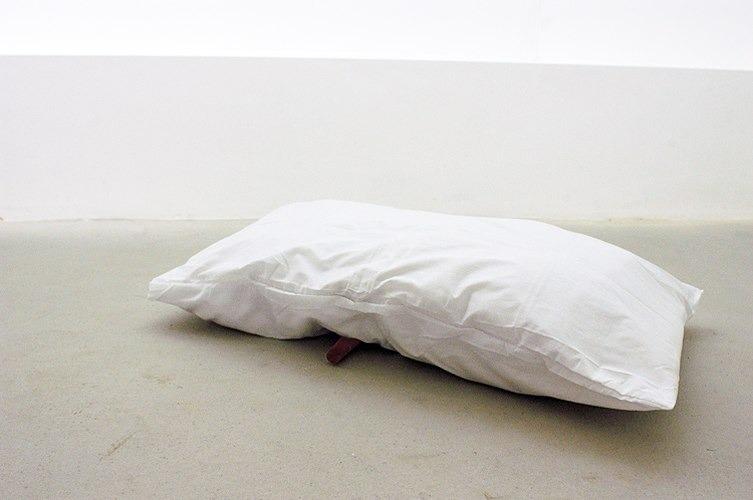

Wow, indeed, you could say that this photograph is the original photograph in the world.

It’s kind of stylish.

The examples I have presented here today are a little retro. I’ve chosen them as I think it’s important to think about the recent problems related to images or image data from the perspective of “photographs that already exist” around that time. Today, countless images are uploaded to the internet, and they are then processed by computers using algorithms and subjected to learning by AI. Following this context, let’s think about the “machine’s eyes” in our next lesson.


OK!
— To be continued.
*URL links were confirmed on October 25, 2023